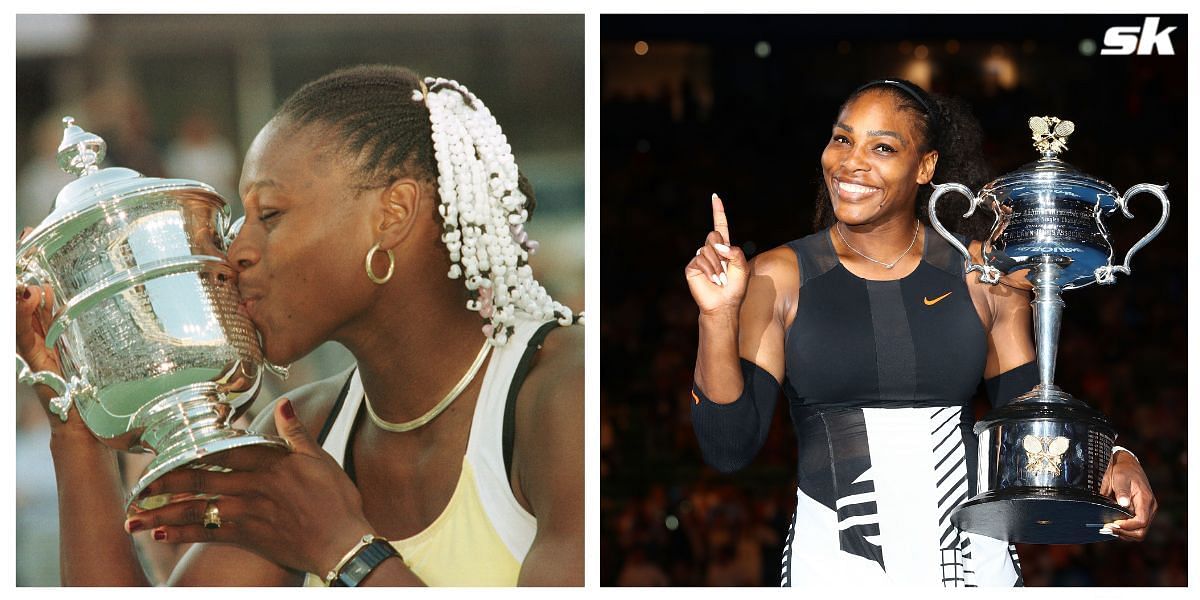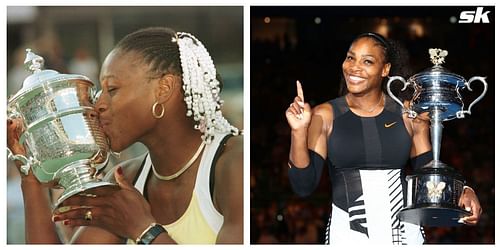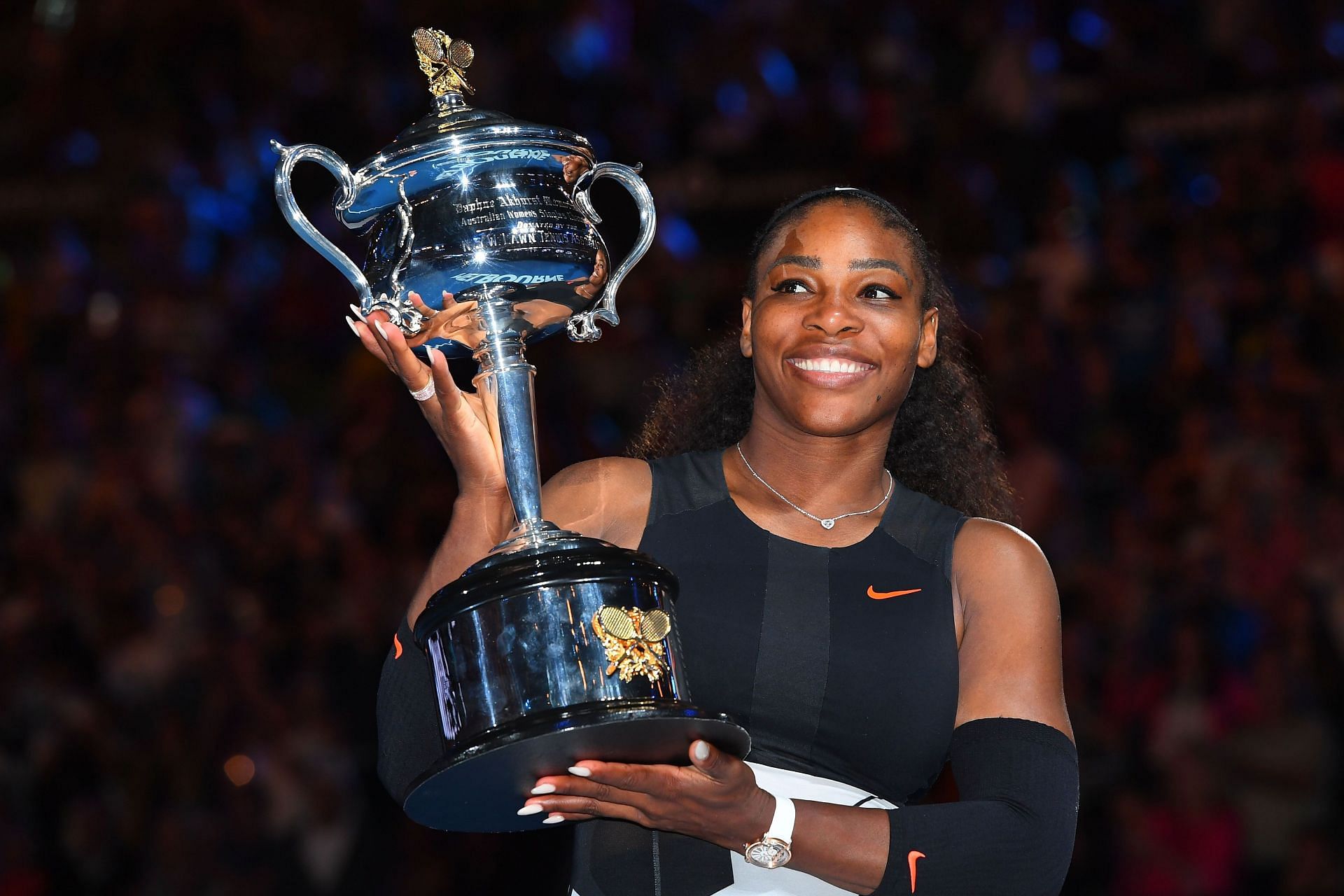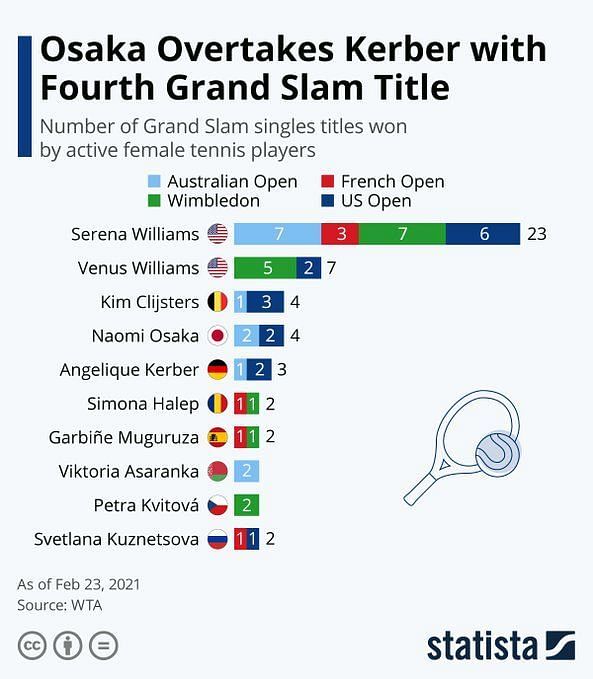
Who will win if 1999 Serena Williams took on 2017 Serena Williams? AI-generated games showcase how the American legend stupified the tennis world with her phenomenal evolution over the years

To celebrate its 50th anniversary, sportswear giant Nike took on a worthy project to showcase one of its most iconic partners of all time -- Serena Williams. To be more precise, the brand wanted to find out who would win if the 1999 version of the 23-time Grand Slam champion took on the 2017 version of her.
The reason why these two versions were chosen was not random but for one specific purpose: to show off how the American had evolved over the years, between the time of her first Grand Slam title and her last Grand Slam title.
In 1999, the former World No. 1 won the US Open title by defeating Martina Hingis to lift her maiden Major title, while her most recent Grand Slam title came at the 2017 Australian Open, where she outclassed sister Venus Williams in the final.
Instead of going with hypotheticals, Nike entrusted the service of an AI to generate over 130,000 games between these two versions of Williams.
"Serena Williams isn't just the greatest tennis player, she is the greatest athlete. We wanted to look back at how she elevated her style of play over time," the voiceover in Nike's video said. "Through archived footage and advanced AI, we generated 130,000 games between two Serena's from two different eras -- 1999 and 2017. Let's see how she developed from the best in the game to the best ever."
The video then played three sample matches from those simulations, with the 1999 Serena Williams winning 2-1 against her older self. But all that is irrelevant since this is how her evolution went in terms of overall numbers.
In terms of average first serve speed, the 18-year-old Williams recorded at 90 miles per hour. The 2017 version, meanwhile, improved on that by 19 miles, serving at 109 miles per hour on average. As a result, the 2017 version of the 40-year-old won 9% more of her first serve points (62% as compared to 53%) and landed 5% more of her first serves (65% against 60%).
The 2017 Williams also fared better when it came to first serve return points, winning 63% of them when compared to the paltry 49% that the 1999 version did. There was also a drastic increase noted in second serve speed, with the 2017 version serving at 103 miles per hour -- a 19-mile increase on the 1999 Williams' average speed of 84 miles per hour on the second serve.
However, the younger Williams landed more of her second serve (82% compared to 63%) and won more points on the second serve (51% compared to 40%). In terms of second serve return points, though, the 2017 version of the 23-time Grand Slam champion reigned supreme, winning 53% as against the 44% the 1999 Williams managed to win.
2017 Serena Williams led simulation results when it came to aces, double faults and success rate

13% of all serves the 2017 Serena Williams delivered were aces, while the 1999 version could only manage to deliver 8% aces. As a direct consequence of the high-risk approach, the older Williams also had more double faults (11% compared to just 6%).
The 1999 version of the American had more errors to her name, however, logging an error rate of 18% when compared to 13% from the other. The 23-time Grand Slam-winning version had a 86% success rate as against the 81% of the one-time Major-winning version, while the 1999 Williams had a better winning rate (0.8 when compared to 0.2).
The younger Williams also turned out to have a better break point conversion rate -- 28% as against the 2017 Williams' 14%. With the latter dominating in almost every category, Nike proved beyond any doubt that Serena Williams continuously evolved with every passing year, adding more weapons to her already formidable arsenal to become the very best in the game.
"Over the years, adding building blocks to an already fantastic foundation of a player that was Serena Williams in 1999, she would eventually evolve into the best in the game, and the numbers back that up," the voiceover concluded.
